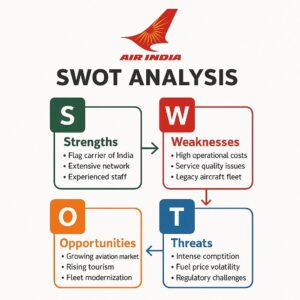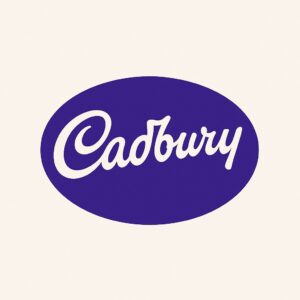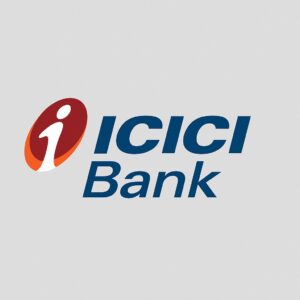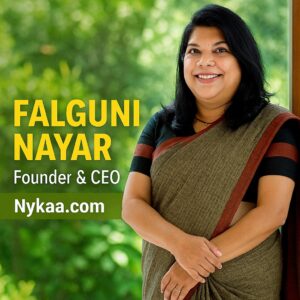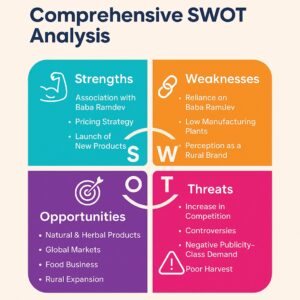SWOT Analysis of Parle

When we talk about iconic Indian brands that have truly stood the test of time, Parle inevitably tops the list — thanks to its legendary product, Parle-G. This biscuit has been more than just a snack; it’s been a part of India’s daily life, emotions, and memories. Whether it’s a cup of chai at a roadside stall in Varanasi or a school lunchbox in bustling Mumbai, Parle-G has been a constant presence across generations.
After our recent deep dive into the SWOT analysis of Britannia, it’s only fair to turn our focus to Parle – its long-standing rival and one of India’s most beloved FMCG giants. Parle isn’t just a biscuit company; it’s a cultural phenomenon that has nourished millions with simplicity, affordability, and trust for nearly a century.
Known for its unbeatable distribution network and nostalgic value, Parle-G continues to be the world’s largest-selling biscuit by volume, a feat that speaks volumes about its dominance. But in an era where consumer preferences are shifting towards premium, healthy, and globalized tastes, the question arises: Can Parle continue to stay relevant and lead the market?
This blog takes you through a detailed SWOT analysis of Parle and its flagship product Parle-G. We will explore the brand’s strengths, weaknesses, opportunities, and threats, while also identifying the top competitors of Parle G and the challenges ahead for Parle Products Pvt. Ltd. in today’s fast-paced FMCG landscape.
Whether you’re a marketing enthusiast, a business student, or simply a curious consumer, this breakdown will give you a fresh perspective on what makes Parle tick — and where it must evolve.
What is Parle? A Timeless Brand Born in India
Parle is not just a company; it’s a part of India’s cultural and emotional fabric. Founded in 1929 by Mohanlal Dayal Chauhan in the suburb of Vile Parle, Mumbai (from where it derives its name), Parle began as a humble confectionery company during the British Raj. Deeply rooted in Swadeshi ideals, Parle’s original mission was to offer Indian-made alternatives to foreign sweets and snacks—a bold step toward self-reliance at a time when the freedom movement was gaining momentum.
During World War II, when imported goods became scarce, Parle transitioned into biscuit manufacturing, giving birth to a product that would go on to become a national icon — Parle-G.
Launched as a simple glucose biscuit, Parle-G stood out with its no-frills packaging, gentle sweetness, and unbeatable affordability. What truly made it unique was how it became a symbol of nourishment, trust, and accessibility. Whether it was packed in school tiffins, served in hospitals, or enjoyed with chai on rainy evenings, Parle-G found a place in almost every Indian home.
Over the years, Parle expanded beyond biscuits into wafers, candies, and beverages, serving generations of Indians with products that remain affordable, hygienic, and trustworthy. Today, Parle operates one of the largest distribution networks in India, with its products available in over 6 million retail outlets across urban and rural markets.
From being a patriotic initiative to becoming the world’s highest-selling biscuit brand by volume (as reported by Nielsen), Parle’s journey is a living testament to the power of simplicity, consistency, and a deep understanding of Indian consumer needs.
Parle at a Glance:
| Founder | Mohanlal Dayal Chauhan |
| Year Founded | 1929
|
| Headquarters | Vile Parle, Mumbai
|
| Employees | Approximately 50,500
|
| Annual Revenue (as of FY24) | $2 billion
|
| Net income (as of FY24) | Rs 16,202 crore |
| Company Type | Private |
| Total assets (as of FY24) | Rs 21 Cr. |
| Key People | Vijay Chauhan – Chairman and Managing Director
Sharad Chauhan Raj Chauhan Ajay Chauhan |
Product Categories
- Biscuits: Parle-G, Monaco, Krackjack, Hide & Seek
- Wafers: Full Toss, Mexitos, Parle Wafers
- Candies: Melody, Kismi, Mango Bite, Poppins
- Beverages: Frooti, Appy, Appy Fizz (Managed by Parle Agro, a separate entity)
Real-World Example of Brand Impact
During the nationwide lockdown amid the COVID-19 pandemic in 2020, Parle Products took a heartfelt step by producing and distributing over 3 crore Parle-G biscuit packets for free through government agencies and NGOs. This generous initiative not only provided essential nourishment to the underprivileged but also deepened the emotional bond and loyalty of Indian consumers toward the brand.
Major Products by Parle
Parle-G remains the heart of Parle’s product portfolio, standing strong as one of the world’s best-selling biscuits. Over the years, Parle has smartly expanded its product line to cater to evolving consumer preferences while retaining the emotional connection built over generations.
Here’s a look at the major Parle-G variants:
- Parle-G Original – The iconic, timeless biscuit loved across all age groups.
- Parle-G Milk Shakti – A calcium-rich variant, especially designed for growing children and those seeking added nutritional value.
- Parle-G Oats & Berries – Targeted at health-conscious millennials and Gen Z, blending traditional taste with modern health needs.
- Parle-G Gold – A premium version offering richer taste and a more indulgent experience.
- Parle-G Chhota Bheem Edition – Specially packaged for children, combining fun and flavor with a trusted brand.
- Parle-G Dark & Parle-G Royale – Crafted to suit the modern urban palate, offering deeper chocolate notes and luxurious texture.
- Parle Cookies – A range introduced to match rising demand for softer, chunkier biscuit formats.
These innovations reflect how Parle is staying relevant in a competitive market—evolving its offerings without losing sight of its roots. From traditional households to modern urban kitchens, Parle-G continues to be a pantry staple, proving that heritage and innovation can go hand in hand.
Competitors of Parle: Biscuit Battle in India’s FMCG Arena
Parle Products, with its iconic Parle-G biscuit, has long held a special place in the hearts (and tea cups) of Indian households. But this nostalgic favorite competes in a highly dynamic and fiercely competitive market. Over the years, several brands have stepped up their game to challenge Parle’s dominance across categories—from biscuits and cookies to wafers and confectionery.
Here are the top competitors of Parle and Parle-G, along with real-world examples of how the rivalry plays out:
1. Britannia Industries
Parle’s toughest rival, Britannia is known for household favorites like Good Day, Marie Gold, NutriChoice, and Bourbon. While Parle-G reigns supreme in rural areas due to its affordability, Britannia dominates urban markets with its wider product variety and premium positioning.
Live Example: In 2020, during the COVID-19 lockdown, Parle overtook Britannia in terms of value market share for a brief period, thanks to its aggressive rural distribution and pocket-friendly pricing. But Britannia quickly bounced back with digital campaigns and product launches in the health segment.
2. ITC (Sunfeast and Bingo!)
ITC has become a serious contender through its Sunfeast range of biscuits and Bingo! snacks. Its strategic use of celebrity endorsements (like MS Dhoni and Shah Rukh Khan) and sleek packaging makes it popular among the youth.
Sunfeast’s Dark Fantasy Choco Fills carved a niche in the premium indulgence biscuit segment—something Parle has yet to fully capture.
3. Nestlé India
Though known for chocolates like KitKat and Munch, Nestlé competes with Parle in the wafer and snack category. Its focus on quality and premium branding gives it an edge in the confectionery space.
Example: Nestlé’s product expansion during 2022–23 into baked snacks and fortified products intensified competition in the urban biscuit segment.
4. Priyagold
Often seen as Parle’s cousin in affordability, Priyagold’s snacks and biscuits, such as Butter Bite and Marie Lite, target a similar price-sensitive audience. The company also offers dairy-based items, expanding its FMCG footprint.
Priyagold is especially strong in Tier 2 and Tier 3 towns, where it competes head-on with Parle in traditional retail.
5. Horlicks Biscuits (under GSK/Unilever)
These biscuits position themselves as health-focused alternatives. Horlicks Biscuits target nutrition-conscious families, especially in South India.
With GSK’s brand heritage and focus on wellness, these biscuits are often chosen by parents looking for a healthier snack for their children—something Parle has responded to by promoting its Parle-G Gold variant.
6. Anmol Biscuits
Anmol is a strong regional player, especially in Eastern and Northern India. Their wide range includes Dream Lite, Marie Time, and Milk Made. Though not as pan-India as Parle, Anmol’s aggressive pricing and deep distribution in its strongholds make it a worthy competitor.
During festivals and local events, Anmol often runs discount schemes and bundle offers—strategies that help it retain customer loyalty in its home regions.
7. Richfield Industries Pvt. Ltd.
This is a lesser-known but emerging regional player in the value-for-money biscuit category. It appeals to local preferences and operates with agility in select Indian states.
With strategic retail tie-ups and participation in local trade fairs, Richfield is slowly building brand equity, similar to how Parle-G rose to prominence in earlier decades.
8. Cookie Man India
This premium cookie brand operates in the niche, indulgent category. With flavors like Choco Chip, Almond Crunch, and Oats & Raisin, Cookie Man appeals to a very different demographic—urban, upwardly mobile consumers.
You’ll often find Cookie Man kiosks at airports, malls, and metro stations, serving freshly baked cookies—a space Parle hasn’t actively explored yet.
SWOT Analysis of Parle G and Parle Products
A. Strengths of Parle
1. Strong and Extensive Supply Chain
Parle’s distribution strength is unmatched. With over 6 million retail outlets and 130+ manufacturing units, it ensures biscuits reach the remotest corners of India. From Ladakh to Lakshadweep, Parle-G is everywhere — fresh, accessible, and affordable.
Live Example: During the peak of the COVID-19 lockdown in 2020, when most supply chains were struggling, Parle delivered over 3 crore Parle-G packets to the needy, underlining the efficiency and depth of its logistics network.
2. Wide Rural Reach and Deep Market Penetration
Parle has cracked the rural market with ease. Its low-cost packs priced at ₹2 and ₹5 make it the go-to snack for the masses. No premium brand can match this penetration.
Why it Matters: In India, over 65% of the population resides in rural areas, and Parle’s focus on affordability helps it dominate where competitors often fail.
3. Affordable Pricing Strategy
In a country marked by income disparity, Parle remains a reliable and budget-friendly option. This value-for-money approach keeps volumes high and ensures daily household consumption.
4. Brand Trust & Emotional Connect
Parle-G consistently ranks among the most trusted brands in India (ET Brand Equity). The emotional connection with Indian consumers is hard to replicate.
Live Example: In 2020, Parle-G recorded its highest sales in 82 years, driven by panic buying, emotional loyalty, and affordability during the pandemic.
5. Strong Export Base
Parle products are sold in over 100 countries. For NRIs, Parle-G is more than a snack — it’s nostalgia in a wrapper. International demand continues to grow, especially in the Middle East, US, and Africa.
6. Iconic Brand Mascot – The Parle Girl
The Parle-G girl has remained unchanged for decades. This consistency fosters instant recognition and trust, especially among older generations who grew up with it.
B. Weaknesses of Parle
1. Overdependence on Parle-G
Parle-G still contributes over 50–70% of the company’s total sales, making the brand vulnerable. A decline in its popularity could severely affect overall revenue.
2. Limited Innovation
Unlike competitors like Britannia or ITC, Parle has been slower in launching new or experimental products. While the market is moving towards gluten-free, protein-rich, and organic options, Parle is lagging behind.
3. Lack of Premium Offerings
Parle has stayed in the mass-market segment. It hasn’t made significant strides into premium biscuits, cookies, or health-centric snacks where brands like Sunfeast (ITC) and Oreo (Mondelez) are gaining ground.
4. Minimal Digital Marketing Presence
Parle’s advertising is still heavily TV-focused. In the age of reels, influencer marketing, and storytelling, this leaves them less visible among younger consumers.
Live Example: Britannia’s “Snack Karo, Relax Karo” campaign on Instagram and YouTube attracted massive engagement from Gen Z — something Parle has not yet tapped into.
5. Manufacturing Saturation
Parle’s production capacity is almost maxed out. Without significant upgrades or automation, it may be difficult to scale up or meet surging demand in international markets.
C. Opportunities for Parle
1. Entry into Health and Wellness Segments
The Indian snacking trend is shifting towards low-calorie, high-protein, and gluten-free options. This opens up an exciting space for Parle to introduce millet-based, multigrain, and sugar-free snacks.
2. Expansion in Global Markets
Parle has potential to grow in Africa, Southeast Asia, and the Middle East, where Indian products are already gaining traction. Tailoring flavors and packaging to local preferences can boost global presence.
3. Tie-ups with Institutions
Bulk sales through tie-ups with government nutrition schemes, schools, railways, and hospitals can provide steady, large-scale revenue.
Live Opportunity: With India pushing mid-day meal programs and fortified nutrition in schools, Parle can position itself as the go-to supplier for healthy snacking.
4. Launching a Premium Product Line
Introducing gourmet cookies, seasonal gift packs, and artisan biscuit lines can help Parle tap into urban, high-income markets and e-commerce platforms.
5. Strengthening Digital & Influencer Marketing
Investing in nostalgia-driven campaigns, reels, YouTube recipes, and influencer storytelling can breathe new life into the Parle-G brand.
Live Example: Nestlé boosted Maggi’s relevance among millennials via YouTube cooking shows. Parle can follow a similar playbook for Parle-G recipe hacks, nostalgic ads, and meme marketing.
D. Threats to Parle
1. Rising Competition
Parle faces pressure from every side — ITC (Sunfeast), Britannia, Nestlé, Oreo, and even smaller regional players like Anmol and Priyagold are capturing market share with new-age products.
2. Shifting Consumer Preferences
Today’s consumers want organic, non-processed, vegan, and low-carb snacks. If Parle doesn’t evolve, it may lose relevance among younger health-conscious audiences.
3. Increased Raw Material Costs
Fluctuating prices of wheat, sugar, and fuel can hit Parle’s margins hard. Given its commitment to low prices, the company has limited room to pass on increased costs to consumers.
4. Urban Market Saturation
Parle already has deep penetration in urban areas. Without innovation or premium diversification, it risks plateauing in these markets.
5. Product Fatigue
While the Parle-G flavor and design are nostalgic for older generations, Gen Z and millennials may find them outdated. A fresh look or sub-brand may be needed to keep up with changing tastes.
Real Incident: ITC’s “Mom’s Magic” saw a boost through celebrity endorsements and OTT ads, offering a fresh, emotional narrative that appealed to young, urban audiences. Parle hasn’t yet explored that lane.
Conclusion
Parle’s journey is a testament to the power of Indian entrepreneurship, simplicity, and emotional connect. From a modest factory in Mumbai in 1929 to becoming the world’s best-selling biscuit brand by volume, Parle has carved a permanent place in the hearts—and pantries—of millions of Indians.
But in a rapidly evolving market shaped by health-conscious choices, digital consumption patterns, and premiumization, legacy alone is not enough.
To remain not just relevant but dominant in the decades ahead, Parle must take bold and strategic steps, such as:
- Diversifying its product line beyond traditional offerings to cater to changing tastes
- Expanding into premium and health-focused snack segments to attract modern, mindful consumers
- Boosting its digital presence, especially on social media, to connect with Gen Z and millennials
- Investing in R&D and innovation, ensuring its offerings stay fresh, relevant, and competitive
As India moves into a new age of consumption driven by convenience, wellness, and digital influence, Parle has the brand trust and legacy to lead once again—but it must evolve with courage and creativity.
The brand’s glorious past is undeniable. Now, it’s time for Parle to script an equally iconic future.
FAQs
Q1. What is Parle?
Parle is one of India’s oldest and most iconic FMCG brands, known for biscuits, candies, and snacks. Parle-G is its flagship product.
Q2. What is the SWOT analysis of Parle?
SWOT analysis of Parle evaluates its strengths like a strong supply chain and brand trust; weaknesses like limited innovation; opportunities in health segments and exports; and threats from rising competition and raw material costs.
Q3. Who are the competitors of Parle G?
Britannia, ITC (Sunfeast), Nestlé (Oreo), Priyagold, Anmol, and regional players like Richfield.
Q4. What are some popular Parle products?
Parle-G, Krackjack, Monaco, Melody, Mango Bite, Hide & Seek, Appy Fizz.
Q5. How can Parle grow in the future?
By investing in digital marketing, launching health-conscious products, upgrading its premium segment, and innovating its brand storytelling.
Q6: What are the strengths of Parle-G?
Affordable pricing, strong distribution, brand loyalty, and high rural penetration.
Q7: What are the weaknesses in Parle G SWOT analysis?
Overreliance on Parle-G, limited product innovation, lack of marketing presence, and no premium product offerings.
Q8: What opportunities does Parle have in the future?
Premium product launches, health and wellness segments, global expansion, and digital marketing.
Q9: What threats does Parle face?
High competition, changing consumer behavior, rising input costs, and market saturation.
Q10: Is Parle-G the world’s best-selling biscuit?
Yes, as per Nielsen reports, Parle-G is the world’s largest-selling biscuit brand by volume.
Q11: What is the digital marketing potential for Parle?
Huge! By leveraging influencer marketing, reels, and storytelling, Parle can re-engage younger audiences.



